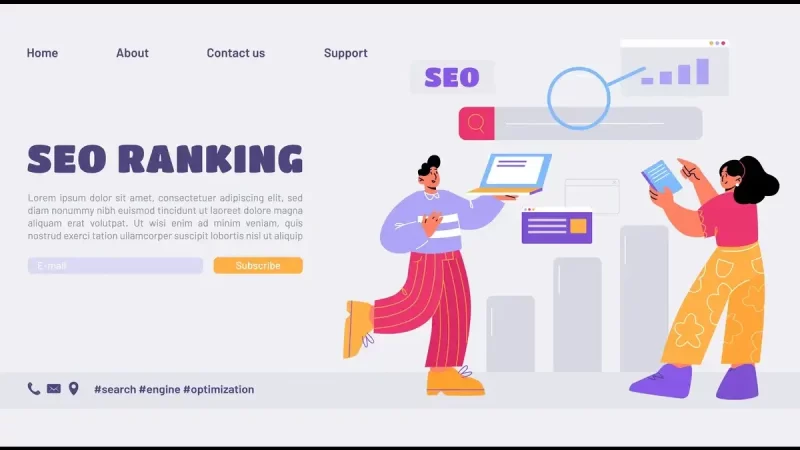How Sites Impacted by Old Helpful Content Update Can Bounce Back and Thrive?

In the ever-evolving landscape of online content, staying relevant is paramount. Search engines constantly refine their algorithms to deliver the most useful and up-to-date content to users. However, these updates can sometimes have unintended consequences, causing once-thriving websites to see a decline in traffic and visibility. When a site is impacted by an update targeting older helpful content, it can be disheartening, but it’s not the end of the road. With strategic adjustments and a focus on quality, impacted sites can bounce back and even thrive. Let’s explore some strategies to accomplish this.
1. Content Audit and Refresh
The first step in bouncing back from an update targeting old helpful content is to conduct a thorough content audit. Identify pages that have been negatively impacted and assess their relevance and usefulness. Update outdated information, refresh statistics, and ensure that the content aligns with current best practices and user intent. By breathing new life into existing content, you can improve its chances of regaining visibility in search results.
2. Focus on Comprehensive Guides and Evergreen Content
In the wake of an update targeting older content, it’s essential to shift focus towards creating comprehensive guides and evergreen content. These types of content are less susceptible to becoming outdated quickly and tend to perform well over time. By providing in-depth coverage of topics relevant to your audience, you can attract sustained traffic and demonstrate expertise in your niche.
3. Enhance User Experience
User experience plays a crucial role in determining a website’s success in the aftermath of an algorithm update. Ensure that your site is mobile-friendly, loads quickly, and offers intuitive navigation. Pay attention to factors such as readability, visual appeal, and accessibility to create a positive browsing experience for your visitors. A well-designed website not only pleases users but also signals credibility to search engines.
4. Optimize for User Intent
Understanding user intent is key to creating content that resonates with your audience and satisfies their needs. Conduct keyword research to uncover the phrases and questions users are typing into search engines. Then, tailor your content to address these queries effectively. By aligning your content with user intent, you can improve its relevance and increase the likelihood of ranking well in search results.
5. Build High-Quality Backlinks
Backlinks remain a crucial ranking factor, and building a strong backlink profile can help boost your site’s visibility post-update. Focus on earning high-quality backlinks from reputable sources within your industry. Leverage guest blogging, influencer partnerships, and outreach campaigns to secure backlinks to your content. Quality links not only drive direct referral traffic but also signal authority to search engines.
6. Leverage Multimedia Content
Diversifying your content strategy to include multimedia formats such as videos, infographics, and podcasts can help attract and engage a broader audience. Visual and interactive content formats are often more shareable and can enhance user engagement signals, which are important for SEO. Experiment with different types of multimedia content to see what resonates best with your target audience.
7. Monitor and Adapt
Finally, it’s essential to continuously monitor your site’s performance and adapt your strategies accordingly. Keep an eye on key metrics such as traffic, rankings, and user engagement to gauge the effectiveness of your efforts. Be prepared to iterate on your tactics based on performance data and evolving search trends. Flexibility and agility are critical in navigating the ever-changing landscape of SEO.
While being impacted by an update targeting older helpful content can be challenging, it’s not insurmountable. By conducting a thorough content audit, focusing on quality and relevance, optimizing user experience, and staying attuned to user intent and emerging trends, impacted sites can bounce back and thrive in the long run. With dedication and strategic adjustments, you can position your website for sustained success despite algorithmic fluctuations.
FAQs: Sites Impacted by Old Helpful Content Update
An old helpful content update refers to an algorithmic change implemented by search engines that targets older content deemed less relevant or useful to users over time. These updates aim to ensure that search results reflect the most current and valuable information available.
A sudden drop in organic traffic and rankings, particularly for older pages, may indicate that your site has been affected by such an update. Conducting a thorough analysis of your site’s performance metrics and monitoring changes in search engine algorithms can help you identify potential impacts.
If your site has been negatively impacted by an old helpful content update, there are several steps you can take to mitigate the effects. Conduct a content audit to identify outdated or irrelevant pages, refresh and optimize existing content, focus on creating comprehensive guides and evergreen content, and prioritize user experience and relevance.
The timeline for recovery can vary depending on the extent of the impact and the effectiveness of your mitigation strategies. In some cases, improvements may be seen relatively quickly, while in others, it may take more time to regain lost visibility and traffic. Consistent effort and adaptation are key to successful recovery.
While it’s impossible to entirely predict or prevent algorithmic changes, there are proactive measures you can take to minimize the risk of future impacts. These include regularly updating and optimizing your content, staying informed about industry trends and best practices, and maintaining a focus on providing value to your audience.







